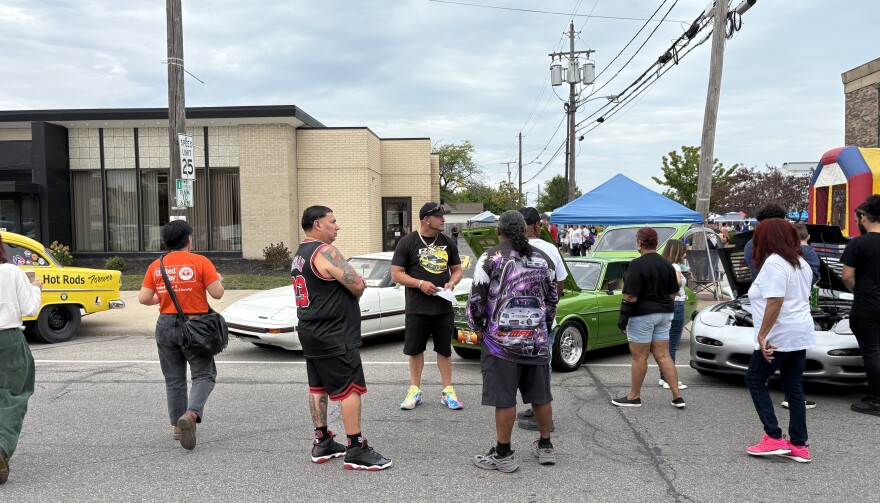The faded brick exterior of the Mexican Mutual Society in Lorain gives way to a busy bar, filled with photographs, newspaper clippings and other nods to the city's Mexican heritage.
The Society’s president, Joel Arredondo, said a desire to belong draws people here.
“People want to come someplace where they feel welcomed, secure, safe, and also where they could identify with other people,” Arredondo said.
The organization builds connections through events such as the Little Queen Pageant and a student scholarship fund.
Scholarship recipient Isabel Valadez says the Society was much more than a source of financial support when her father died.

“In 2019, when he passed away, you know, everyone here was so loving, everyone was so caring," she said.
The society is one of several organizations cited in a new report by Leadership Ohio about the rise — and dangers — of social isolation. Others groups lauded in the report are in Columbus, Dayton, Portsmouth and Sandusky.
Mexican Mutual makes it easy for people to come together through its programming, including celebrity bartender nights, said Lisa Duty, executive director of Leadership Ohio.
“They are bringing in politicians, people, or people running for office even," Duty said. "They're putting them behind the bar at the club. Politicians are serving drinks, but they're also in a really laid back environment where they can communicate with the neighborhood."
That type of interaction can help counter the report's finding that Ohioans feel more disconnected from each other than in the past, she said — a trend also seen nationwide.
A 2023 U.S. surgeon general advisory that found isolation increased the risk for premature death equal to smoking 15 cigarettes a day. The advisory attributed the rise in loneliness and social isolation, in part, to increased use of social media and virtual reality.
The cure for isolation

Civic engagement has been shown to give individuals a sense of purpose — and a mission that bolsters their mood, said Eileen Anderson, the director of Education, Bioethics and Medical Humanities in the Case Western Reserve University School of Medicine.
Without sufficient interaction, she said, people's thoughts can turn dangerously negative.
"One of the protective factors of social relationships is having other people give you input into your thoughts," Anderson said. “We can get some pretty negative spirals going cognitively and it's part of why suicidality is much higher in groups who are isolated.”
But civic engagement alone is sometimes not enough, especially since people in social isolation can develop addictions. That’s when more specialized groups such as Alcoholics Anonymous or Gamblers Anonymous can help, she said.
“They tend to bridge individual processing of your own life,” Anderson said.
Connecting communities
But participating in more informal neighborhood gatherings can also do wonders for increasing social cohesion and reducing depression, according to a recent study.

One of Mexican Mutual’s partners in community engagement is El Centro, a social services agency for Lorain County’s large Hispanic population.

El Centro recently held a block party to celebrate Hispanic Heritage Month. People came together to listen to music, watch traditional dances and other activities, including a car show, while children played in bounce houses and with instruments, including drums and violins.
During the event Puerto Rican artist Héctor Collazo Hernández painted a Puerto Rican flag mural on the side of El Centro’s building to honor his heritage and his brother who died by suicide.
The mural is "depicting the love in the Puerto Rican community that exists here, [so they] feel that even though Puerto Rico is far away, this can also be home,” Hernández said through a translator.
Leadership Ohio isn't stopping at civic engagement in its quest to reverse isolation, Duty said. It plans to issue another report in January looking at 26 additional factors that can help people feel connected — including charitable giving, volunteering and assisting neighbors.



